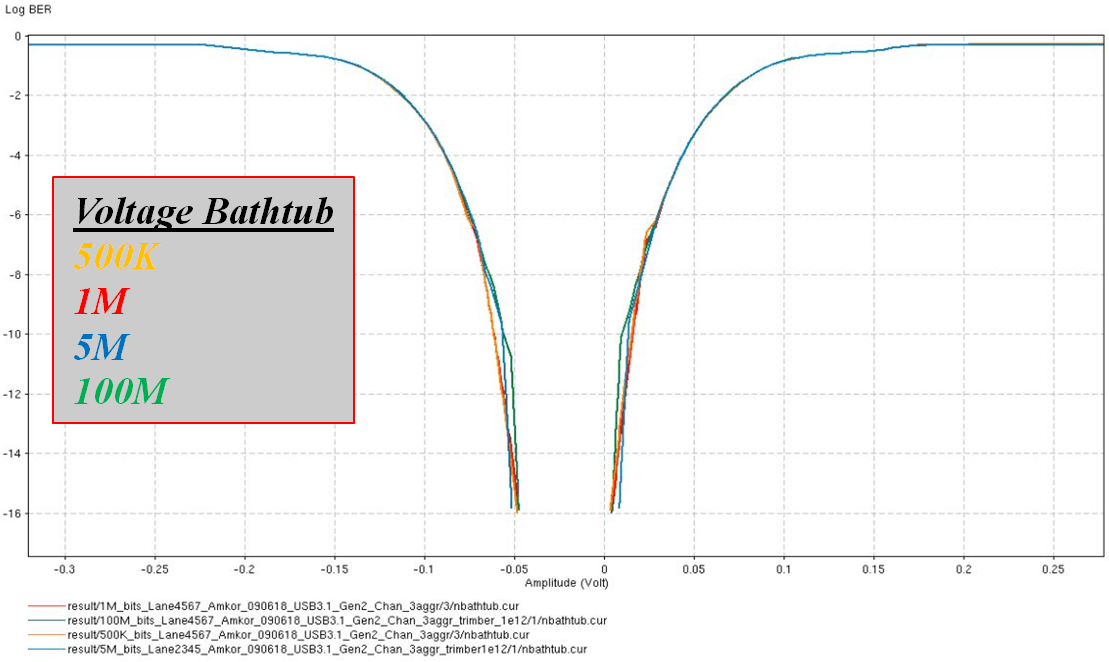SPRACV3 December 2020 AM6412 , AM6422 , AM6442
- Trademarks
- 1Simulations
-
2Models
- 2.1 IBIS-AMI Model Kit
- 2.2 The Kit Structure
- 2.3 Contents of the Kit
- 2.4 IBIS Analog Models
- 2.5
Algorithmic Models
- 2.5.1
Transmitter (Tx) Model
- 2.5.1.1 TX AMI Parameters for Gen 1
- 2.5.1.2 TX AMI Parameters for Gen 2
- 2.5.1.3 TX AMI Parameters for Gen 3
- 2.5.1.4 TX AMI Parameters for Sgmii
- 2.5.1.5 TX AMI Parameters for Qsgmii
- 2.5.1.6 TX AMI Parameters for USB3.0
- 2.5.1.7 TX AMI Parameters for USB3.1
- 2.5.1.8 TX AMI Parameters for USXGMII
- 2.5.1.9 TX AMI Parameters for Display Port
- 2.5.1.10 Transmitter Specifications
- 2.5.1.11 TX_Jitter Injection Parameters
- 2.5.2 Receiver (Rx) Model
- 2.5.1
Transmitter (Tx) Model
- 2.6 Valid Simulation Condition
- 2.7 Eye Mask Requirement
1.1.4 Simulation Methodology
For interfaces where the eye mask is specified in terms of a BER target it is recommended to run the initial channel simulations for around 100K bits and observe the extrapolated bathtub curves for the corresponding target BER, as reported by the simulator. Another simulation for around 500K and 1M bits can be rerun and the bathtub curves can be overlaid to observe the impact of running for larger bit sequences. An example of voltage bathtub curves overlaid is shown in Figure 1-3). Similar overlay can be made for the jitter bathtub curves.
 Figure 1-3 Bathtub Curve Overlay
Figure 1-3 Bathtub Curve OverlayTypically, all the ISI should be accounted for within the first 100K bits of the simulation and beyond this point, all bathtub curves should converge if the Random Jitter (Rj) in the models is sufficiently small. It is recommended to confirm this convergence up front by running at least one set of system-level channel simulations each for 100K, 500K and 1M bit sequences. If the voltage and jitter bathtub curves from each of these simulations are almost identical, the remainder of the simulations can be run at 100K bits to optimize run times.
For interfaces where the eye mask is not specified for any particular BER target, a 100K bit simulation should suffice.